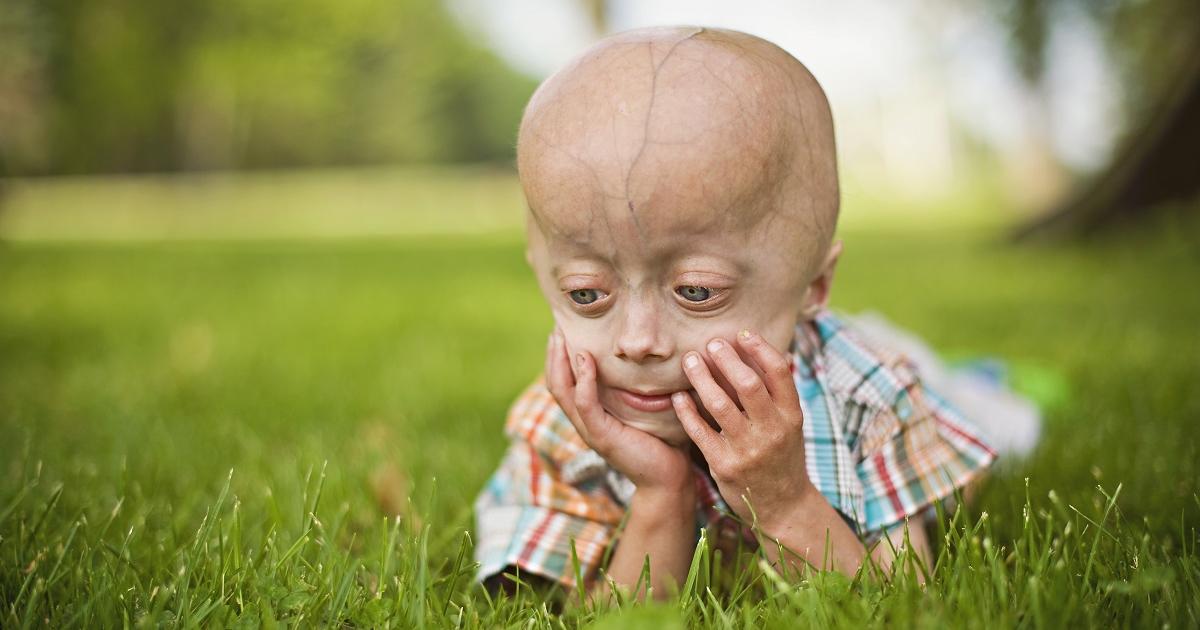What Are The Symptoms Of Hutchinson-Gilford Syndrome?
Distinctive Facial Appearance

Children affected by Hutchinson-Gilford syndrome will develop a distinctive facial appearance that looks considerably different than the face of a healthy child. Affected children often have a head that is larger in terms of proportion to the size of their face. They also tend to have a lower jaw that is disproportionately small to the size of their head. Other common facial characteristics of children with Hutchinson-Gilford syndrome are a beaked nose, thin lips, and a face that appears narrower than it should. The child's eyes sometimes abnormally protrude outward, and their eyelids may not close completely. Due to an underdeveloped jaw or micrognathia, Hutchinson-Gilford syndrome patients often have an abnormal crowding of the teeth once they erupt into the mouth. In addition, these individuals often develop a slight blueness surrounding their mouth. Most children affected by this condition also lose their eyebrows and eyelashes. The hair on the head falls out and may not grow back, though sometimes the hair on the head and face does grow back in white or grey.
Uncover more warning signs of Hutchinson-Gilford syndrome now.